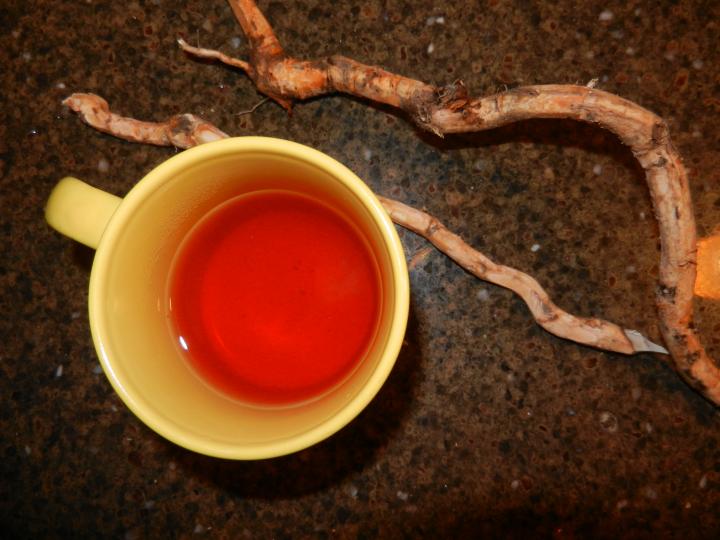






A Spring Tonic, using the early greens of spring, may be just the thing you need to get through this month!
While the vernal equinox may mark the moment of spring, the appearance of the first greens makes it real. The early settlers were firm believers in the tonic effects of eating spring greens: they were said to stimulate the digestion, purify the blood, cure scurvy and ague, combat rheumatism, and repel kidney stones after a long cold winter of inactvity.
Rich in vitamins and trace minerals, these cleansing greens and roots were prepared and drunk in early spring, providing much-needed nourishment and energy after a nutrient-poor winter. Tonics also stimulated the appetite, the circulation, and bodily functions as settlers got ready for physical farm labor.
Let’s face it—anything fresh and green no doubt tasted great after a wearisome winter of salt pork and dried beans.
Dandelions were so valued that they were cultivated in gardens.
Try using the tender young leaves in salads, either fresh or blanched, as the French and Dutch settlers favored. Or, use the leaves as one would spinach or make them into soup. (Those who boiled dandelion greens in water often made a point of drinking the “pot likker” or cooking water, which was, in fact, loaded with water-soluble vitamins.)
Did you know? Dandelions can also be used as a relaxing body rub. See our Natural Remedies for Stress and Anxiety.
One warning. Make sure that the dandelions have not been treated with chemicals before you pick them. Our lawn is safe as we try not to use any pesticides or fertilizers on it.

Rhubarb, or pieplant, was widely regarded as a fine spring tonic to aid the blood and the digestive system. Cooked and stewed rhubarb was called “spring fruit” in early cookbooks.
Note: Only eat rhubarb stalks. Do not eat the leaves, as they contain high levels of oxalic acid, which is toxic in high doses.
Boil rhubarb and enjoy it as a soup (with some sweetener). Rhubarb is also delicious in preserves, puddings, and pies.
(See rhubarb recipes here.)
(See rhubarb planting guide here.)
Early spring means it’s time to make Sassafras Tea! Old-times made this popular spring tonic by boiling together bunches of sweet fern, sarsaparilla, wintergreen and sassafras with water.

Image: Sassafras leaves
Or, you can just boil sassafras root.
Sassafras saplings were a pioneer tree, and still common, especially on field edges. Note: As with all wild plants, be sure to get help if you need tree identification, such as the Audubon Society Field Guide.
Sassafras roots are dug up, dried for a few days, and chopped into two-inch pieces. (You need about a foot of root for a half-gallon of tea.) Leaves are dried, too. After boiling the concoction and simmering for 15 minutes, it’s drained and sweetened with sugar to taste. Sassafras tea is still popular today.
Note: If you find these plants in the wild, make sure that you are allowed to legally dig the roots. If you make these tonics for ingestion, consult with a health professional so that you are making them safely. For example, sassafras can be toxic in large amounts, so don’t drink enormous amounts year-round!
If you make or drink spring tonics, or have any questions, please share below!
Copyright © www.100flowers.win Botanic Garden All Rights Reserved